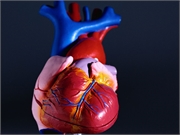Changes in left ventricular size, subclinical dysfunction reported for regular cannabis use versus rare/no use
THURSDAY, Dec. 26, 2019 (HealthDay News) — Regular recreational cannabis use is associated with alterations in cardiac structure and function, according to a letter to the editor published in the December issue of JACC: Cardiovascular Imaging.
Mohammed Y. Khanji, M.B.B.Ch., Ph.D., from Queen Mary University London, and colleagues examined the associations between cannabis use and cardiac structure and function using cardiovascular magnetic resonance parameters in the UK Biobank population study (3,407 individuals). Self-reported cannabis use was categorized into: rare/no use (3,255 individuals), previous regular use (105 individuals), or current regular use (47 individuals).
The researchers found that compared with rare/no cannabis use, regular cannabis use was associated with larger indexed left ventricular end-diastolic and end-systolic volumes (+5.31 ml/m² and +3.3 ml/m², respectively) and impaired global circumferential strain (−0.78), even after adjustment for potential confounders. No differences were seen for left ventricular myocardial mass, ejection fraction and stroke volume, or right ventricular, left atrial, and right atrial parameters following multivariable adjustment. The parameters for previous cannabis users were similar to those seen in rare/never users.
“Findings should be interpreted with caution and further research is required to understand the potential pathophysiology, dose-response effects of cannabis use and the long-term implications of regular use on the cardiovascular system,” the authors write. “Health care professionals and policy makers may need to advise caution on regular recreational cannabis use until such systematic research is available.”
Two authors disclosed financial ties to the pharmaceutical industry.
Copyright © 2019 HealthDay. All rights reserved.








